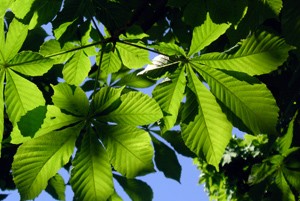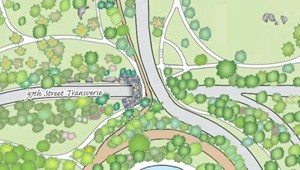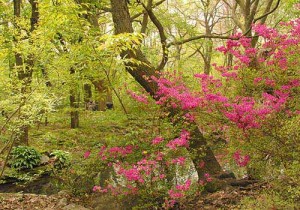Tree Identification Resources
Web Pages
- What Tree Is That?
The National Arbor Day Foundation - eNature.com Field Guide
One of the web’s premier destination for information about the wild animals and plants of the United States. - Know Your Trees: A Guide to the Identification of New York State Forest Trees
Cornell University Extension
- Notes ID Sheets
- LEAF Tree ID Key
- Regreen Winter Tree ID Key
- Tree Cataloging Sheet
- Conifer ID ‘Cheat Sheets’
Field Guides
- National Audubon Society Field Guide to North American Trees: Eastern Region
- Peterson Field Guide Series – A Field Guide to Eastern Trees
- National Wildlife Federation Field Guide to Trees of North America
- Tree Finder: A Manual for the Identification of Trees
- Winter Tree Finder: A Manual for Identifying Deciduous Trees in Winter
Videos
- Trees with Don Leopold
State University of New York – ESF Tree ID Video Collection
A Collection of 120 videos, each about 3 minutes in length, outlining the characteristics of common trees - Identification and Ecology of Common Northeastern Hardwood Trees
Cornell University Extension
A 1-hour comprehensive video introduction to 50 common tree species - Tree Identification Part One
- Tree Identification Part Two: Using a Field Guide
Mobile and Smartphone Tree ID Apps
- LeafSnap
This app from researchers at Columbia University, University of Maryland and the Smithsonian Institution takes an interesting approach to helping you identify plant species. It uses visual recognition software — snap a photo of a plant leaf and it will figure out what species you’re looking at. The database includes images of not only leaves but also flowers, fruits, seeds and bark to help identify a species. - MyNature Tree Guide
This handy app has two databases for searching by leaf or by needle, so you can identify over 190 tree species found across the U.S. and Canada. You can search by leaf or needle, or you can even search by question. It includes a ruler for measuring out leaf or flower sizes for more accurate identification, and also has a journal for recording your sightings along with other bonus features. - Audubon’s Field Guide to North American Trees
With 716 North American tree species included in this app, you’ll be able to identify the species of most any tree around. It includes notes on leaves, bark, fruits, seeds and more so you have multiple tools for identifying a species. The app also includes gorgeous photos to sort through. - Virginia Tech Tree Identification
This app brings the award winning Virginia Tech digital dendrology material to your Android or iPhone device. It contains fact sheets for 969 woody plants from all over North America with an in depth description, range map and thousands of color images of leaves, flowers, fruit, twigs, bark and form.
Mapping and Cataloging
Interactive Maps
- The Waugh Arboretum at UMass Amherst
An interactive viewer of campus trees by Todd Beals, a Regreen Springfield Board Member and a member of the UMass Campus Planning Office - Washington Park Arboretum Interactive Map
University of Washington Botanic Gardens - vPlants: A Virtual Herbarium
The Morton Arboretum, the Field Museum of Natural History, and the Chicago Botanic Garden developed vPlants (“virtual Plants”) as an online, searchable database to provide free web access to data and digital images of plant specimens collected in the Chicago Region. The project began in January 2001 and was initially funded by the Institute of Museum and Library Services
More About Arboretums
Articles
- The ArbNet Arboretum Accreditation Program
This program was created to establish and share a widely recognized set of industry standards for the purpose of unifying the arboretum community and providing a mechanism for benchmarking and guidelines for professional development. The ArbNet Arboretum Accreditation Program recognizes arboreta at various levels of development, capacity, and professionalism. - Oak Park named one of first municipal arboretums
- Creating a Herbarium
Nearby Arboretums
- Arnold Arboretum at Harvard University | Boston, Massachusetts
The Arnold Arboretum is the oldest public arboretum in North America and one of the world’s
leading centers for the study of plants. Administered by the Office of the Provost of Harvard
University and a vital link in the Emerald Necklace of parks in Boston, Arnold is a unique blend
of respected research institution and beloved public landscape. It provides and supports worldclass
research, horticulture, and education programs that foster the understanding, appreciation,
and preservation of trees. Arnold is filled with things to do and see, so plan to spend a whole day
or afternoon there.
- Connecticut College Arboretum | New London, Connecticut
The Connecticut College Arboretum provides a welcome involvement with the natural world,
offering opportunities for teaching, research, conservation, recreation and public education.
Including the campus itself, the Arboretum encompasses approximately 750 acres of preserved
open space in southeastern Connecticut. Once a farm surrounded by woodlands, the Arboretum
lets visitors explore its diverse collection of natives and botanicals, to watch a show at the
outdoor Flock Theater, or to just simply wander and enjoy the beauty of this precious natural
resource filled with wondrous beauty.
- Berkshire Botanic Garden
Called “a glistening community gem” by Virginia Small, author of the book Great Gardens of the Berkshires, the Garden’s mission is to fulfill the community’s need for information, education and inspiration concerning art and science of gardening and the preservation of our environment. Our public display gardens are open May to mid-October. Both functional and ornamental, they are among the oldest in the US and have been expanded over the years in breadth and variety through a series of bequests and major gifts. Our collections emphasize plants that are indigenous to or thrive in the Berkshires.
- The Botanic Garden of Smith College
The Botanic Garden is the living laboratory for a variety of courses as well as numerous research projects. It is also a workplace and training institution–for work-study students and interns and for the skilled Botanic Garden staff. Students have valuable and exciting opportunities to work directly with living plants as part of their academic studies. All departments and students are encouraged to incorporate the campus landscape and our collection of living plants into your studies. Today, the Botanic Garden includes thousands of plants, including those grown under glass in the Lyman Conservatory and outdoors in the campus arboretum — our landscape for learning — and various specialty gardens around campus. Additionally, there are 60,000 pressed specimens available for research in the herbarium. Botanic Garden activities and collections include not only plants but also books and other resource materials (including our newsletter, Botanic Garden News), an international seed exchange, research and conservation, and diverse events. Yet the living plant specimens are the heart of the Botanic Garden and our bridge to the rest of the botanical world, past, present, and future.
- Frank A. Waugh Arboretum at the University of Massachusetts/Amherst
The campus of the University of Massachusetts Amherst Contains many unusual and outstanding specimen trees and gardens. This rich legacy is due to the vision and achievements of our predecessors. William S. Clark, the University’s third president. Clark traveled to Hokkaido, Japan to establish an agricultural university. Clark and his successor, Professor William Penn Brooks, brought back a number of outstanding Japanese plants towards the end of the 19th century, some of which remain today. In the early 20th century, the campus arboretum flourished under the inspired direction of Frank A. Waugh, the first head of the Landscape Architecture Department. In 1944, President Hugh Potter Baker officially recognized the campus arboretum as a memorial to Waugh and his contribution to the campus landscape. Since Waugh’s time, the campus has grown profoundly. While the earlier rural fabric of the campus has been changed, the older trees remain as living testimonials of the University’s history. In recent years, a number of significant plantings, gardens, and art sites have been added to the campus continuing the tradition of Clark, Brooks and Waugh. There is much to discover in this “landscape for learning”.
Click here for a map and walking tour guide.



